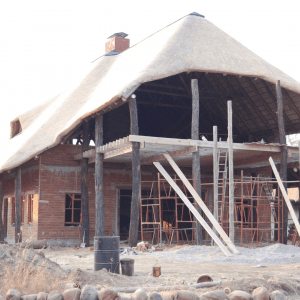“Our society as a whole needs to leverage the forces of globalization, technological advancement, and climate change – what the UN calls ‘the three mega forces’ – for disruptive solutions to further inclusive sustainable economic development,” said Director of the Hunt Institute Dr. Eva Csaky. “We can reach this goal by harnessing the power of disruptive collaboration.” The CEB research partnership and collaboration between Dr. Brett Story and the Hunt Institute began in 2015 for just this purpose.
Previous phases for this research included Phase I, focusing on the strength testing of CEBs under a variety of conditions including varying moisture levels, cement content, and soil type. This research was followed by Phase II, focusing on determining characteristics for different types of soil found globally as a first step in standardization.
Phase III’s objectives were somewhat altered due to the global pandemic which resulted in breaking the work into two parts. This semester the team developed a report entitled,” Better Building: Compressed Earth Block Report,” which highlights the market opportunity and sustainability of compressed earth blocks in construction. The project manager is JuliaGrace Walker, and the undergraduate researcher is Madison Rodriguez.
The next part of the project will take place during the summer and fall term of 2021. In Phase III, analyses will be performed and data will be compared from the test structures at both the Taos and Dallas campuses. Relationships between soil type and mix design, block strength, and thermal properties will also be investigated. Additionally, this investigation will include models developed by Dr. Story’s lab team which is comprised of Ph.D. students Jase Sitton and Robert Hillyard, as well as undergraduate researchers Adriana Mena and Ziyu Sun. Combined together, both parts of Phase III will inform the vision of a living laboratory at SMU@ Taos.
Dr. Story’s vision is ultimately “…to use the data obtained during this project to make recommendations for full-scale, more permanent structures that can be used by faculty and students at the SMU Taos campus. The information learned during this project will be used to start the design of a “living” laboratory, which would be a laboratory building constructed with CEB and instrumented with a variety of sensors. In this way, the structure is both the laboratory space as well as the test specimen.”
CEBs are an emerging earthen construction technology that contribute to stronger and more resilient earth infrastructure. As interest in sustainable construction technology has increased, more research has been conducted on CEBs as an alternative to traditional masonry. Comparing CEB to traditional masonry, CEB structures can be more energy efficient throughout their life cycle. When approached accordingly, they can are energy efficient to produce and transport, while conserving resources and reducing waste production. CEBs are better insulated due to their high thermal mass and thermal resistance. Subsequently, their high thermal inertia gives CEBs the advantage of humidity regulation, and evaporation of water in the earthen walls contributes to natural cooling. CEBs represent a cost effective, energy efficient, and sustainable solution that directly contribute to the ninth and eleventh UN Sustainable Development Goals, which address industry, innovation, and infrastructure, as well as sustainable cities and communities. CEBs indirectly contribute to many other SDGs through their impact on health, household incomes (through cost savings) and quality of life.
Sam Borton contributed to this post.
Read more about the Hunt Institute’s work to develop future-focused solutions to some of the world’s biggest problems here. We invite you to listen Join us for ImpactNights® or listen to our podcast called Sages & Seekers. If you are considering engaging with the Institute, you can donate, or sign-up for our weekly update by emailing your contact information to huntinstitute@smu.edu.







